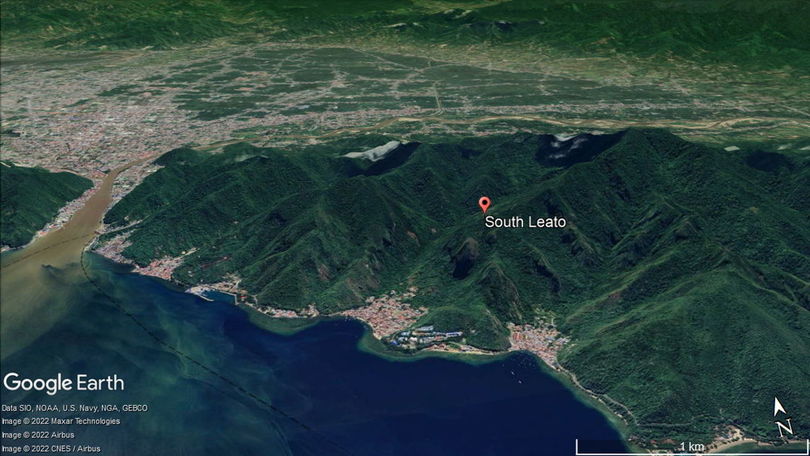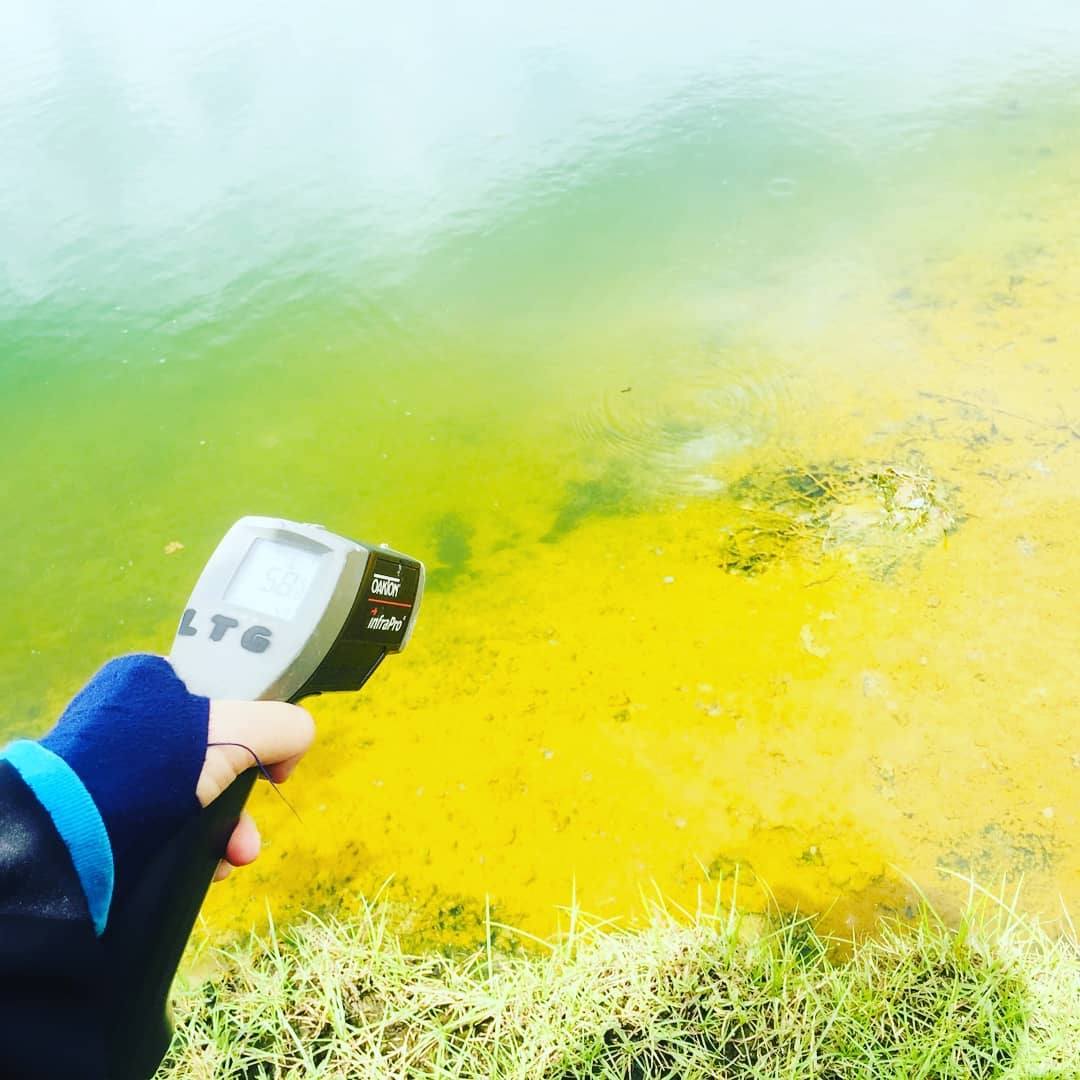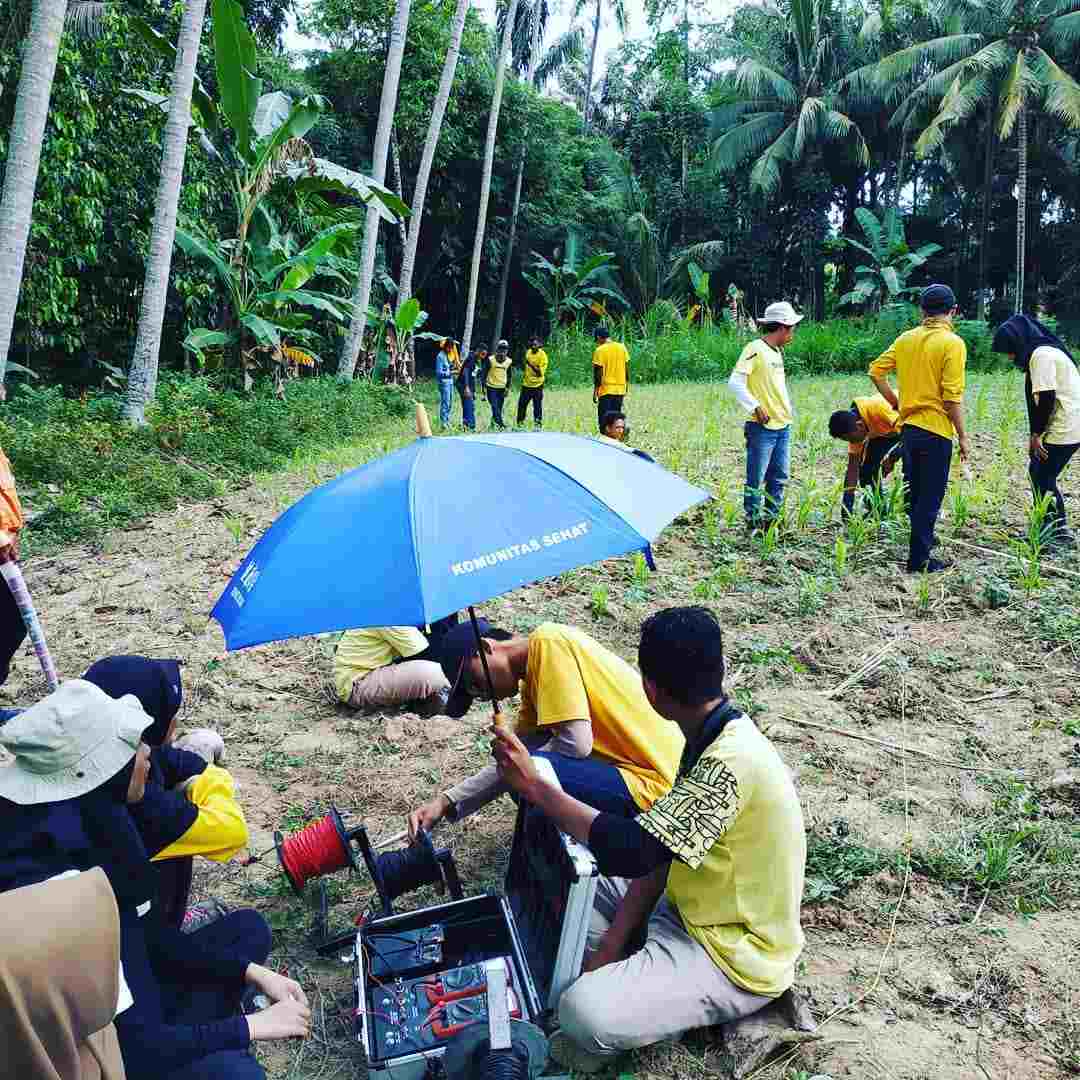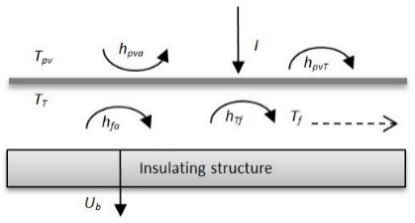Analisis Struktur Geologi Daerah Leato Selatan dan Sekitarnya, Kecamatan Dumbo Raya, Kota Gorontalo

Research location.
The research area is located in South Leato, Dumbo Raya District, Gorontalo City. The research area is consist of Bone Diorite Formation which is in the miocene and the Pinogu Volcano Rock Formation which is in the quarter. The geological structure of the study area recorded in different rock formations is very interesting to be studied. The purpose of this study is to identify the types and general directions of geological structures that control the stress regime in the study area. This research method is in the form of field data collection and studio analysis. Data is collected by the field survey method. Analysis studio in the fracture processing data. Based on observations in the field, the geological structure contained in the study area is controlled by fracture. The type of fracture in the field is shear fracture. The results of the reconstruction of shear fracture in the study area is relatively northwest-southeast and north-south main direction.
Keywords: lithology, geological structures, rezim stress.
Madusila, R. S., Muhsin, N., Manyoe, I. N., Taslim, I., Umar, E. P., Abdullah, A. F., & Usman, F. C. A. (2020). Analisis Struktur Geologi Daerah Leato Selatan dan Sekitarnya, Kecamatan Dumbo Raya, Kota Gorontalo. Jurnal Azimut, 3(01), 1-7.
Subsurface Shallow Modelling Based on Resistivity Data in The Hot Springs Area of Libungo Geothermal, Gorontalo, Indonesia

Libungo hotsprings
Volcano-tectonic events in Libungo can be the cause of the presence of geothermal potential. There is no detailed research on shallow subsurface conditions in Libungo that can show the distribution of subsurface fluids. This research aims to create a shallow subsurface model of the Libungo geothermal area based on resistivity data. Resistivity data collection was carried out in the Libungo hot springs area. The electrode configuration used is the Schlumberger configuration. The variation in resistivity values is calculated using current data, potential difference data and geometry factors. The results of the calculation of the resistivity values variation are plotted versus depth. Variations of resistivity value versus depth are then displayed in the form of a single log, lithology distribution and 3D lithology model. The results showed that the shallow subsurface of the Libungo geothermal area was composed of andesite, volcanic breccia, silty clay and clay. Andesite in the research area has resistivity values ranging from 320-349 ohm.m, has slightly fracture and is andesite dry. Volcanic breccia has a resistivity value of 177-198 ohm.m, has a well to slightly fracture and is a volcanic breccia moist. Silty clay has a resistivity value of 3.25-37.99 ohm.m and is a wet to moist silty clay. Clay has resistivity values in the range 1.56-2.78 ohm.m and is wet to moist clay. Fluid distribution in the shallow subsurface area occurs in volcanic breccia, silty clay and clay. Shallow subsurface fluids accumulate mostly in the northern part of the Libungo geothermal area.
Keywords: Fracture, Fluids, Thermal, Lithology, Schlumberger.
Manyoe, I. N., & Hutagalung, R. (2020). Subsurface Shallow Modelling Based on Resistivity Data in The Hot Springs Area of Libungo Geothermal, Gorontalo, Indonesia. Journal of Geoscience, Engineering, Environment, and Technology, 5(2), 75-80.
Potensi dan Rancangan Kawasan Eco-Geotourism Olele

Buku Potensi dan Rancangan Kawasan Eco-Geotourism Olele
Buku ini mencoba menguak potensi “tersembunyi” yang dimiliki daerah Olele. Pembaca akan disajikan pembahasan yang lugas, yang meliputi pembahasan aspek geomorfologi, geodiversitas, biodiversitas terumbu karang, mitigasi bencana, dan pengenalan konsep kawasan EcoGeotourism. Buku ini merupakan karya yang berasal dari buah pikiran penulis tentang sebuah rancangan kawasan Eco-Geotourism Olele. Rancangan kawasan Eco-Geotourism dibuat dengan penerapan integrasi data satelit dan kajian pustaka demi menghasilkan suatu rancangan kawasan wisata alam yang berlandaskan prinsip konservasi, edukasi, dan mitigasi. Buku ini dipersembahkan sebagai salah satu luaran dalam Program Kreativitas Mahasiswa Tahun 2020 yang didanai oleh DITJEN BELMAWA DIKTI, Kementerian Pendidikan dan Kebudayaan Republik Indonesia.
Abduh, A. G., Usman, F. C. A., Tampoy, W. M., & Manyoe, I. N. (2020). Potensi dan Rancangan Kawasan Eco-Geotourism Olele. UNG Press, Gorontalo.
Subsurface Structure Identification In Ilotidea Using Electrical Method For Developed The Flood Tourist Science Village

Data acquisition
Gorontalo is one area that is very vulnerable to flooding. Flood problems in Gorontalo must have a solution that can have a positive impact on the community and the government. The purpose of this research is to identification subsurface structure of the Ilotidea Region by using resistivity method. The result of this research will be used for the fundamental of developing the Flood Tourist Science Village. The method that used in this research is to take subsurface data by using the IPMGEO-4200 Electrical Resistivity Meter in 6 points at Ilotidea Village. Processing data through calculating the apparent resistivity, then interpreting the subsurface structure of the Ilotidea region. Based on the results of the data analysis, there are obtained 5 layers at each data retrieval point. The layers found at each point are composed of sandy clay, clay, sand, clay, and sandstone. Based on the results of the interpretation of the subsurface structure, the sandy clay layer is arranged with a layer of clay which has the characteristic of not easily escaping the water. This causes the Ilotidea area to be very vulnerable to flooding because when surface runoff and rainfall falls into this area has a high intensity and volume it will cause inundation due to the absence of water absorbed by material found below the surface. Based on the subsurface structure of the Ilotidea region, the house foundation that will be made in a flood tourism science village must reach a depth of 5-10 m where at this depth the layer is a clay layer which is not easy to escape and elastic so the house is not easy to collapse.
Keywords: Lithology, Subsurface, Electrical, Flood Tourism, Ilotidea.
Tolodo, D. D., Suma, M. D., Yusuf, N. J., & Manyoe, I. N. (2019). Subsurface Structure Identification In Ilotidea Using Electrical Method For Developed The Flood Tourist Science Village. Jurnal Sains Informasi Geografi, 2(1), 44-49.
Theoretical approach model of building integrated photovoltaic thermal air collector

Schematic of temperatures and heat transfer coefficients of a PVT air collector.
Over recent years the photovoltaic technology has obtained signifcant development, especially in building integrated photovoltaic thermal (BIPVT) system. Photovoltaic thermal (PVT) air collectors are advantageous because of their efficiency. Various studies have been conducted to determine the ideal parameters of PVT air collectors. Few theoretical approach models of PVT air collector systems were used to help detect occurrences in a PVT collector system and calculate the optimal parameters. The heat transfer and energy balance of PVT air collectors were analysed and reviewed based on the model, quantity of cover, channels and forms of the collector. A mathematical model was developed to describe actual working situations and to examine new shut PVT collectors. The first law of thermodynamics is the principal equation in the model. Different analysis methods were utilised to evaluate PVT performances, which are generally based on energy and exergy analyses. This review focuses on theoretical approach model of single-pass PVT air collector.
Fudholi, A., Zohri, M., Taslim, I., Indrianti, M. A., & Manyoe, I. N. (2020). Theoretical approach model of building integrated photovoltaic thermal air collector. International Journal of Power Electronics and Drive Systems, 11(2), 1002.
